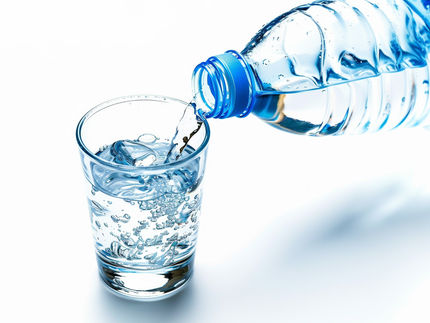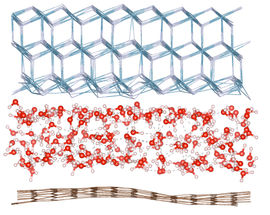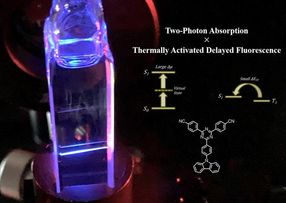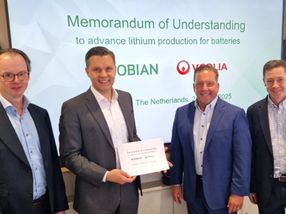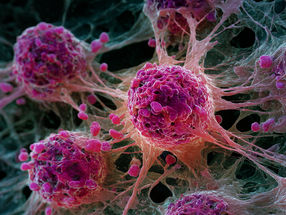BAM develops certified PFAS reference material made from used outdoor clothing
On the way to a circular economy
The Federal Institute for Materials Research and Testing (BAM) has developed a reference material for per- and polyfluoroalkyl substances (PFAS) in outdoor textiles. It serves to ensure the reliability of analytical methods used to determine the content of certain PFAS in outdoor clothing. Compliance with PFAS limits is an important step on the road to a circular economy.
The certified reference material BAM-B003 stands for sustainability in two ways: Not only were old outdoor garments donated by employees used to produce it, but the reference material will also help to transfer outdoor clothing to a circular manufacturing process. This is because, to recycle textiles, manufacturers need to know exactly whether the raw materials are contaminated with harmful substances and, if so, to what extent.
Laboratories that test outdoor clothing for PFAS levels exceeding the limits can use the new reference material to check whether their analytical methods are delivering correct results. The PFAS levels in the reference material have been accurately determined and subsequently certified. If the laboratory measures the same PFAS levels in its analysis of the reference material, this means that it is delivering reliable results. BAM-B003 is one of the few PFAS reference materials on the market that is certified according to ISO 17034 and thus represents a reliable benchmark for laboratories.
On the way to a circular economy
The reference material represents an important step on the way to a circular economy. According to the EU Commission, European textile consumption is the fourth largest cause of environmental pollution and climate change – after food production, housing, and mobility. Textiles therefore represent one of seven areas of the DIN standardisation roadmap ‘Circular Economy’. ‘Reference materials for PFAS analysis are urgently needed,’ explains Matthias Koch, Head of the Organic Trace and Food Analysis Division. ’A number of regulations for limiting PFAS have been updated in Germany and Europe – for example, the Drinking Water Ordinance, the Federal Soil Protection and Contaminated Sites Ordinance, and EU standards for contaminants in textiles. However, to ensure compliance, laboratories must be able to guarantee that their results are correct. This requires certified reference materials."
Exactly the same amount of PFAS in every sample
The BAM clothing donors were also able to find out, if they wished, whether and to what extent their clothing was contaminated with PFAS. The appeal resulted in 42 textiles being tested for PFAS. The reference material was produced from the contaminated garments. To do this, the textiles were shredded, ground several times and cooled with liquid nitrogen in between to improve grindability and prevent the mill from overheating. To ensure that each bottle of reference material contains exactly the same amount of PFAS, the mixture was repeatedly checked for homogeneity during blending. The reference material contains 18 different PFAS. The exact content of each of these substances is specified in the certificate.
Other news from the department science
These products might interest you
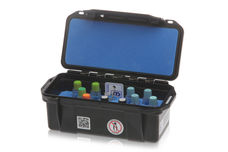
Starna by Starna Scientific
Highest quality precision quartz and glass cuvettes for all applications
Custom and OEM options. All popular cells available from stock!
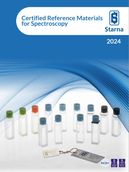
Certified Reference Materials for Spectroscopy by Starna Scientific
Starna Scientific: Your solution for precise spectroscopy calibration
ISO-certified reference materials for accurate and safe spectroscopy

Certified reference materials of the European Commission's Joint Research Centre by ERM
Certified reference materials for the analysis of environmental,food,clinical and industrial samples
Certified reference materials (CRMs) provide confidence in the correctness of analytical results
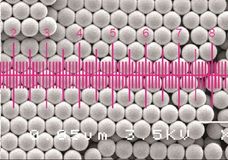
NanoStandard™ / MicroStandard™ by Applied Microspheres
Highly uniform polymer particle size standards, with traceable mean diameters
Traceable both to the international System of Units (SI) and NIST

SmartCal by Mettler-Toledo
SmartCal verifies Moisture Analyzer Performance in 10 minutes
Proper verification and documentation assists you to fulfill the demands of industry regulations and company audits

Get the chemical industry in your inbox
By submitting this form you agree that LUMITOS AG will send you the newsletter(s) selected above by email. Your data will not be passed on to third parties. Your data will be stored and processed in accordance with our data protection regulations. LUMITOS may contact you by email for the purpose of advertising or market and opinion surveys. You can revoke your consent at any time without giving reasons to LUMITOS AG, Ernst-Augustin-Str. 2, 12489 Berlin, Germany or by e-mail at revoke@lumitos.com with effect for the future. In addition, each email contains a link to unsubscribe from the corresponding newsletter.

